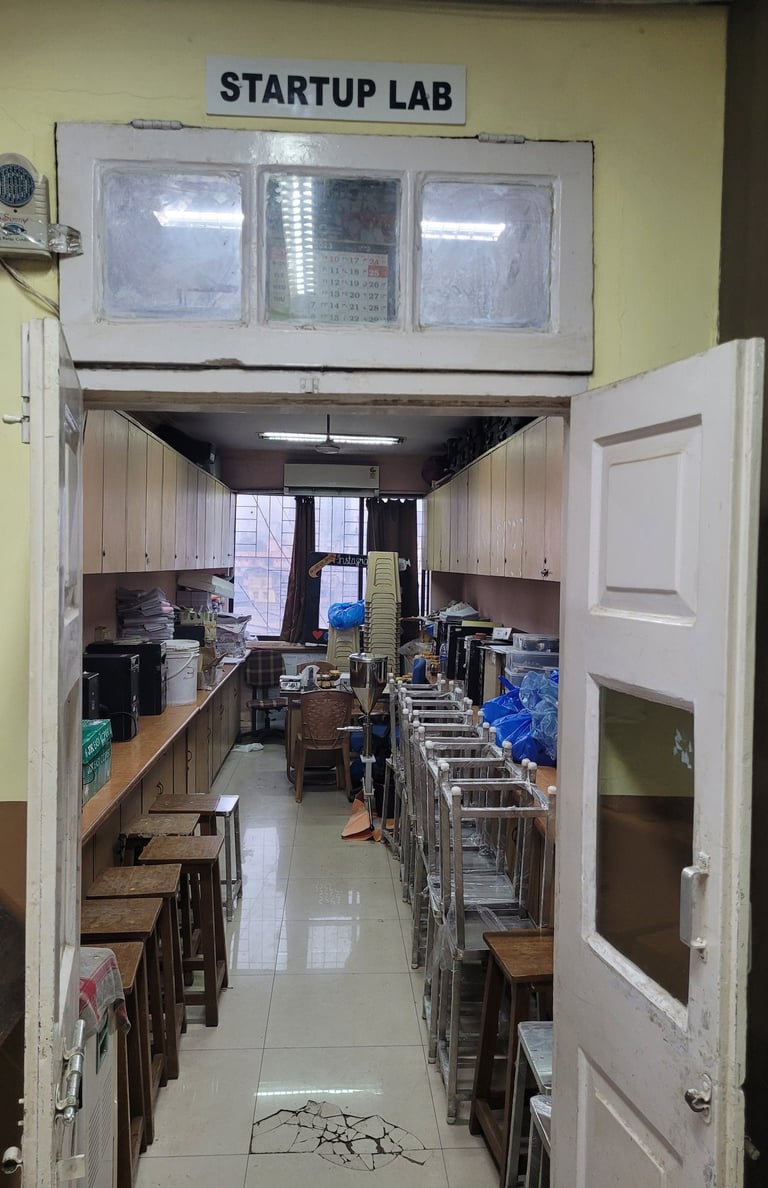Cover Story
For Business
From Classrooms to Start-ups:
How Mumbai Colleges are Nurtring Entrepreneurs
By Hanif Lakdawala
By Hanif Lakdawala | For Business
I
From Classrooms to Start-ups:
How Mumbai Colleges are Nurturing Entrepreneurs
On a humid August morning, Ayesha Shaikh, a third-year BMS student at Akbar Peerbhoy College in Grant Road, is not preparing for her next lecture. Instead, she’s pitching her fintech idea to a panel of mentors at the college’s incubation cell. Her project — a mobile app that helps small shopkeepers track daily sales and manage credit digitally — may never have existed if not for her college’s new-found enthusiasm for entrepreneurship. “For the first time, we feel like we don’t have to wait to
Across Mumbai, a quiet but powerful transformation is underway. Colleges once known only for their academic rigor and cultural festivals are now doubling up as launchpads for start-ups. Institutions like Jai Hind College, Somaiya Vidyavihar, UPG College (Mithibai Campus), and Akbar Peerbhoy College are increasingly recognizing that their students don’t just aspire to secure jobs — they want to create them.
A Shift Beyond Degrees
For decades, Mumbai’s colleges have been stepping stones to coveted corporate careers. But in recent years, the rise of India’s start-up ecosystem — now the world’s third largest — has reshaped ambitions. According to Startup India data, there are over 1,000 campus incubators and entrepreneurship cells across India, a number that has doubled in the last five years. Maharashtra, with its mix of financial capital and academic hubs, has emerged as a natural leader in this space.
Mumbai colleges, tapping into the city’s entrepreneurial DNA, are ensuring that students don’t just graduate with degrees, but with business plans, mentors, and in some cases, even seed funding.
College Spotlights
Jai Hind College
At Jai Hind College, entrepreneurship isn’t confined to a noticeboard announcement or a guest lecture. The college’s Entrepreneurship Cell (E-Cell) hosts regular bootcamps, ideation workshops, and even “Shark Tank” style pitch sessions. Jai Hind has emerged as a frontrunner in fostering entrepreneurial spirit. Its Incubator & Accelerator Centre offers students access to legal, financial, and IP support. The annual Global Entrepreneurship Summit draws over 120 startups and industry leaders, creating a vibrant ecosystem of innovation and opportunity. For many Jai Hind students, the message is clear: you don’t need an MBA to be an entrepreneur. What you need is an idea, a network, and the confidence to hustle — all of which the college actively cultivates. For many Jai Hind students, the message is clear: you don’t need an MBA to be an entrepreneur. What you need is an idea, a network, and the confidence to hustle — all of which the college actively cultivates.
Somaiya Vidyavihar
If Jai Hind has mastered the cultural side of entrepreneurship, Somaiya Vidyavihar has built a serious institutional setup. Its RIIDL (Research Innovation Incubation Design Laboratory) has supported dozens of start-ups, some of which have scaled into profitable ventures.
Somaiya provides seed funding, co-working spaces, access to labs, and, most importantly, mentorship from industry experts. The ecosystem is structured, almost like a mini start-up accelerator.
Home to RIIDL (Research Innovation Incubation Design Laboratory), Somaiya is a powerhouse of tech and social entrepreneurship. Supported by DST and BIRAC, RIIDL provides funding, mentorship, and infrastructure for student-led ventures. Hackathons, pitch competitions, and startup bootcamps are regular features on campus. Somaiya’s example shows how colleges can go beyond enthusiasm and create formal pipelines that connect student ideas to markets.
UPG College
At UPG College, part of the Mithibai campus ecosystem, the emphasis lies in bridging students with alumni entrepreneurs. Festivals like Entrepreneurship Week bring back successful alumni who not only share their journeys but also scout for student ideas to mentor or fund.
One such initiative saw a group of BMS students develop a hyperlocal grocery delivery service during the pandemic. What began as a necessity quickly grew, thanks to alumni guidance in building supply chain partnerships. Today, the group is exploring seed funding opportunities while still completing their final year exams.
“Our college gave us visibility and connected us with the right people. Without that, we would have been just another WhatsApp group doing deliveries,” one of the founders admits.
The UPG model demonstrates how colleges can leverage their social capital to create opportunities for current students.
Akbar Peerbhoy College
While the spotlight often shines on elite South Mumbai or suburban campuses, Akbar Peerbhoy College of Commerce & Economics represents another important trend — democratizing entrepreneurship. For many of its students, often first-generation learners, the idea of running a business was once distant.
Now, with mentorship programs and incubation cells, students like Ayesha (the fintech app founder) are breaking barriers. The college is proving that entrepreneurship isn’t the preserve of the privileged; it can be nurtured in any classroom, provided the right support is in place.
Student Voices
What’s most striking is the confidence of student founders. Many cite their college incubators as the turning point—from idea to execution. Whether it’s a sustainable fashion brand, a fintech app, or a mental health platform, these ventures are born from lived experiences and nurtured by institutional support.
Challenges & Opportunities
While the momentum is undeniable, challenges remain. Funding gaps, limited access to seasoned mentors, and scalability issues often stall promising ideas. Yet, the commitment from these colleges to bridge the gap between academia and industry is a promising sign.
Mumbai’s New Classroom
As Mumbai evolves, its colleges are no longer just degree factories; they are mini-ecosystems of ideas, ambition, and innovation. From South Mumbai to the suburbs, students are proving that you don’t have to wait for an MBA or a Silicon Valley investor to start a company. You can begin in your classroom, with your classmates, and with the support of your college.




Insights
Explore valuable resources for aspiring entrepreneurs today.
Connect
Support
info@forbusiness.co.in
© 2025. All rights reserved.
info@forbusiness.co.in
